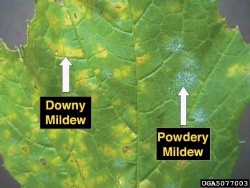More forests expected from a revamped ETS
FOREST OWNERS ASSOCIATION
MEDIA RELEASE
18 September
2011
More forests expected from a revamped
ETS
Forest owners say that if the government adopts the changes to the ETS recommended by its review panel more forests are likely to be planted. New Zealand needs more forests in order to meet its targets for reducing greenhouse gas emissions.
“New Zealand has based its ETS laws on the wording of the Kyoto Protocol and this has created anomalies that discourage forest owners and farmers from planting,” says Forest Owners president Peter Berg.
“The ETS review panel says New Zealand needs to take a hard-headed look at the wisdom of continuing to do this, especially since it is highly unlikely that the protocol will exist in its present form beyond 2012.”
It recommends that forest owners should be allowed to replant existing forests in a new location following harvest – something that incurs huge financial penalties at present. It also asks the government to look at self-insurance and averaging schemes which have the potential to eliminate the open-ended risks now associated with carbon forestry, without incurring any costs for the taxpayer.
“Forest owners have been arguing for these changes since ETS legislation was first drawn-up under the former Labour-led Government. We also correctly predicted that rates of new planting would be modest without them.”
Mr Berg says he welcomes climate change minister Nick Smith’s largely positive response to the panel’s recommendations. But he is concerned that the minister has distanced himself from the panel’s strong call for agriculture to come into the ETS as planned in 2015.
The panel says agriculture has abatement opportunities including forestry, nitrification inhibitors, and ‘good practice’ farm management techniques that increase productivity. All of these options are available now and others will be available in the future as a result of the efforts going into research today, says the report.
Mr Berg says the wider environmental and economic benefits of controlling emissions should not be lost sight of just because there may be a modest cost to the industries involved. “Tree planting incentivised by the ETS will also help reverse the ongoing decline in NZ's water quality and help boost the environmental credentials that New Zealand farmers use to market their products.”
A key technical issue highlighted by the review panel is the ability of New Zealand emitters to offset their liabilities by buying ‘hot air units’ from overseas. These Certified Emission Reduction Units (CERs), which are generated by industrial emitters when they destroy greenhouse gases, lack integrity.
“The European ETS limits the use of CERs. Australia is also proposing restrictions on them. Furthermore, the European Commission has declared that CERs from industrial gas projects will no longer be acceptable for use in the EU ETS after April 2013,” says FOA chief executive David Rhodes.
Speaking at a conference in Canberra this week he said that if New Zealand does not take similar action our ETS will likely become the prime destination for tens of millions of these otherwise homeless units. They have the potential, he says, to make the NZ ETS meaningless.
“Already we have seen CERs trade down from around NZD $24 a tonne just over three months ago, to lows of around $13 a tonne now.
“Combined with the government’s two-for-one concession to industry for the surrender of emission units, this means the cost of compliance for local emitters has been as low as NZD $6.50 a tonne. Foresters are not interested in participating at this level, bearing in mind that their carbon price liabilities at harvest are open-ended.”
Mr Rhodes says the release of the NZETS review is very timely given that legislation for an emission reduction scheme has been before the Australian parliament. The stated intent of ministers on both sides of the Tasman is to align the two schemes and this is reflected in close co-operation between the officials involved.
In his meetings in Canberra he found industry and political leaders were very interested to find out how the NZETS works and the changes that are needed.
“Both schemes subsidise emission-intensive trade exposed industries. But the Australians don’t have the New Zealand two for one subsidy that the review panel believes should be extended beyond the present 2012 cut-off,” Mr Rhodes says.
Having an Australian floor price on carbon that will be priced above international levels and a move to a fixed cap on emissions, are other differences that will create headaches for officials on this side of the Tasman.
“Clearly a lot of adjustment will be needed to harmonise the two schemes by the ideal date of 2015, while bearing in mind that our dialogue is not just with the Aussies. California is also planning to implement an ETS by 2013 and both Korea and Japan have ETS schemes under consideration by their governments.”
[ends]


 Insurance and Financial Services Ombudsman: Insurers Urged To Support People In Vulnerable Circumstances
Insurance and Financial Services Ombudsman: Insurers Urged To Support People In Vulnerable Circumstances Sustainable Business Network: Million Tree Milestone Seeds New Nature Initiative
Sustainable Business Network: Million Tree Milestone Seeds New Nature Initiative Earth Sciences New Zealand: New Zealand Part Of Hidden Global Deep-Sea Network Beneath The Waves
Earth Sciences New Zealand: New Zealand Part Of Hidden Global Deep-Sea Network Beneath The Waves The Rail Advocacy Collective: Government’s Transport Policies Are Flawed
The Rail Advocacy Collective: Government’s Transport Policies Are Flawed Environmental Protection Authority: EPA Approves New Fruit Fungicide
Environmental Protection Authority: EPA Approves New Fruit Fungicide Science Media Centre: Landmark Climate Change Case This Week – Expert Reaction
Science Media Centre: Landmark Climate Change Case This Week – Expert Reaction


